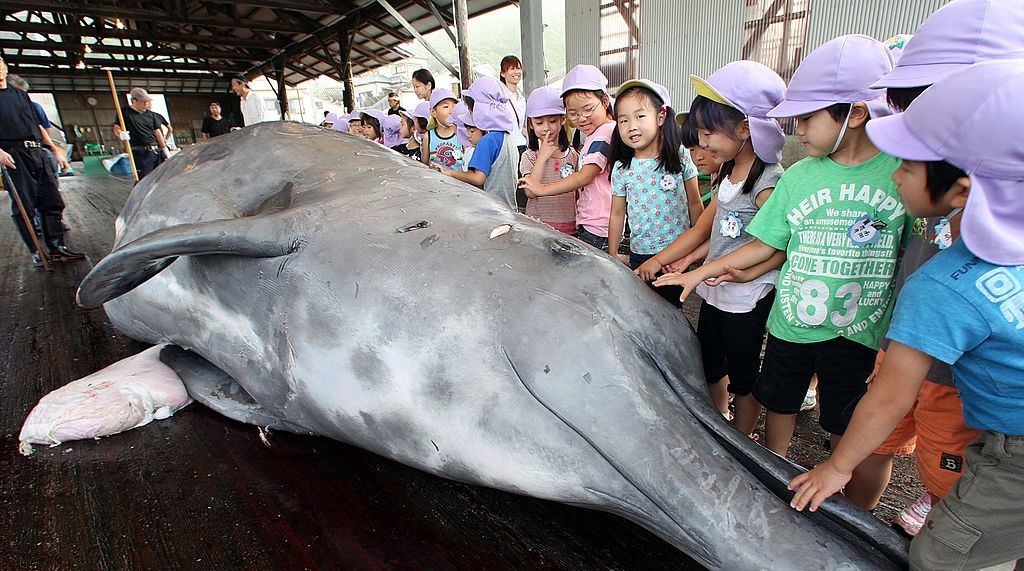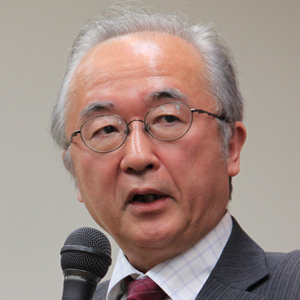
Japan’s recent withdrawal from the International Convention for the Regulation of Whaling, widely portrayed as a victory for Japanese whaling, may actually be the last nail in the industry’s coffin, writes Senior Fellow Masayuki Komatsu.
* * *
On June 30 this year, Japan officially withdrew as a signatory to the International Convention for the Regulation of Whaling. On July 1, the media trumpeted the resumption of commercial whaling after a 31-year hiatus, accompanied by footage of whale meat auctions and whaling ships setting sail. There was no shortage of opinions on both sides of the issue; I myself was approached by more journalists than I can count. But not a single news outlet seems to have grasped the cold, hard truth behind the Japanese government’s seemingly defiant—and ultimately self-defeating—gesture.
The reality is that Japanese whaling is facing extinction, and this latest move can only hasten its demise. To be sure, Japan, having left the International Whaling Commission, is no longer bound by the IWC’s moratorium on commercial whaling, in effect since 1986. But the government is restricting whaling to Japan’s 200-nautical-mile exclusive economic zone, fearing legal action by other countries under such instruments as the United Nations Convention on the Law of the Sea (UNCLOS). Since Japan has withdrawn from the ICRW, its right to catch whales for research purposes in international waters is no longer protected. Japan’s total catch limit will be a mere 227 whales, down from its peak post-1986 quota of 1,454.
Chronicling the Decline
The IWC has been dominated by anti-whaling forces since 1982, when the organization adopted a moratorium on commercial whaling. Japan disagreed with the moratorium but dropped its formal objection in 1988 (under pressure from the United States). Thereafter it shifted its focus to “scientific whaling,” protected by Article 8 of the International Convention for the Regulation of Whaling (ICRW), along with efforts to rally support for a review of the moratorium.
Japan’s negotiating power within the IWC probably peaked around the time of the 2002 annual meeting, held in Shimonoseki, Yamaguchi Prefecture. Frustrated with the double standard that recognized aboriginal subsistence whaling in Alaska but not “small-type coastal whaling” in Japan, Japan formed a coalition to block the US request for new quotas for Alaska Eskimos. But this was as far as it got.
At the 2007 annual IWC meeting in Anchorage, Japan supported America’s request for a 67-whale annual aboriginal subsistence quota for Alaska Eskimos in the expectation that the United States, in turn, would support quotas for Japanese small-type coastal whaling. When the United States voted against the Japanese proposal, Japan felt betrayed. It lost all appetite for negotiation and began threatening to withdraw from the commission and establish a separate, pro-whaling organization to manage whale stocks.
In response to charges of “dysfunction” by Japan and other pro-whaling countries, the commission held a series of intersessional meetings on the future of the IWC between 2007 and 2010. In the course of these negotiations, Japan pivoted almost 180 degrees. This pivot became evident with the IWC’s April 2010 release of a draft proposal, submitted by the chair and co-chair but in reality authored jointly by the United States and Japan.
In exchange for an eventual lifting of the moratorium, Japan offered to cut its own quota from 1,454 to 427, Norway from 885 to 600, and Iceland from 350 to 160 (while leaving America’s aboriginal-subsistence quotas untouched). Moreover, despite its longstanding position that the IWC moratorium on commercial whaling was illegal, Japan relinquished the right to conduct whaling under objections or reservations, or even under special (scientific) permit. The proposal went counter to Japan’s longstanding principles and the national interest. Moreover, it infuriated Norway and Iceland, which have been distrustful of Japan’s motives ever since. (Opposed by conservationists, the proposal was defeated at the June 2010 annual meeting in Morocco.)
In May 2010, meanwhile, Australia instituted proceedings against Japan in the International Court of Justice, accusing it of violating international agreements by conducting commercial whaling in the Antarctic under the guise of research. The Japanese government vowed that it would fight and win, but its performance in court was lackluster. Relying on an international team of legal experts, it challenged the ICJ’s jurisdiction on a technicality and was soundly rebuffed. Moreover, it avoided addressing the fundamental scientific issues head-on, leaving the all-important scientific testimony to a Norwegian scientist.
In March 2014, the ICJ ruled that Japan’s Antarctic whaling program was essentially a front for commercial whaling, prohibited under the IWC moratorium, and must therefore be halted. This was clearly a flawed judgment, since the moratorium itself is illegal. Even so, the Japanese government accepted the ruling without protest.
In the wake of the ICJ ruling, Japan suspended its Antarctic hunt for the 2014–15 season. In 2015, it resumed scientific whaling under a plan that essentially negated the progress made since 1986. In the Southern Ocean, it restricted the hunt to minke whales, for which there was little market demand, and it reduced the catch target to 333 (down from 1,035). It also curtailed its research program in the Northwest Pacific, halting the capture of sperm and Bryde’s whales and hunting of minke whales off the coast of Japan and reducing the quota from 380 (in effect since 2004) to 262.
Teetering on the Brink
Now, in the wake of Japan’s withdrawal from the ICRW, the Antarctic catch limit has plummeted to zero, while the quota for coastal whaling has dropped to 227. In less than 10 years, Japan has reduced its own whaling quota by 1,227 from a peak of 1,454. This is something the government could have explained to the international community at the Group of 20 summit in Osaka at the end of last June, but it opted to keep quiet on the issue.
And what are the prospects for the industry? The government has allocated ¥5.7 billion in whaling subsidies in fiscal year 2019. With a catch limit of 227 whales, revenue will be no more than around ¥1 billion. As an Icelandic acquaintance quipped, this is not commercial whaling; it is “subsidized whaling.”
This year, two noted Osaka whale meat restaurants closed their doors. The lower catch limit will further reduce the supply of whale meat on the market and drive prices sky high, dealing a crippling blow to a sector that is already teetering on the brink. The prospects for whaling as a viable food industry are dimmer today than ever before.
Translated from “Kokusai hogei torishimari joyaku dattai no imi,” Sekai Nippo, July 21, 2019.

